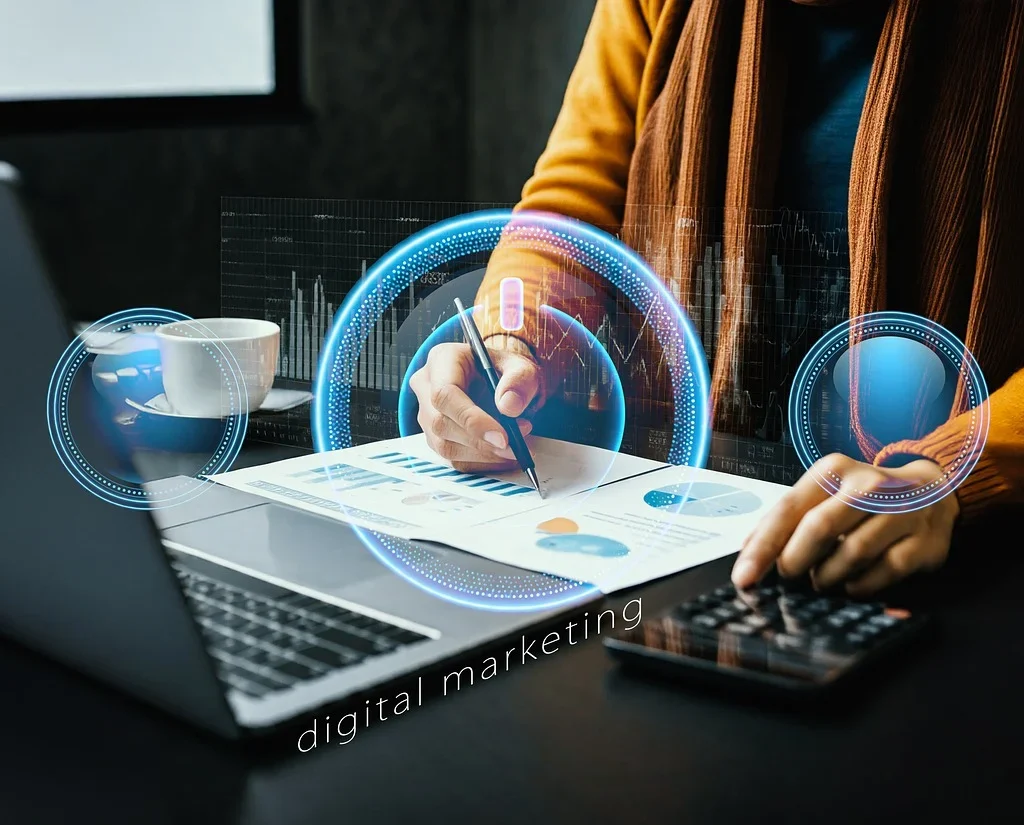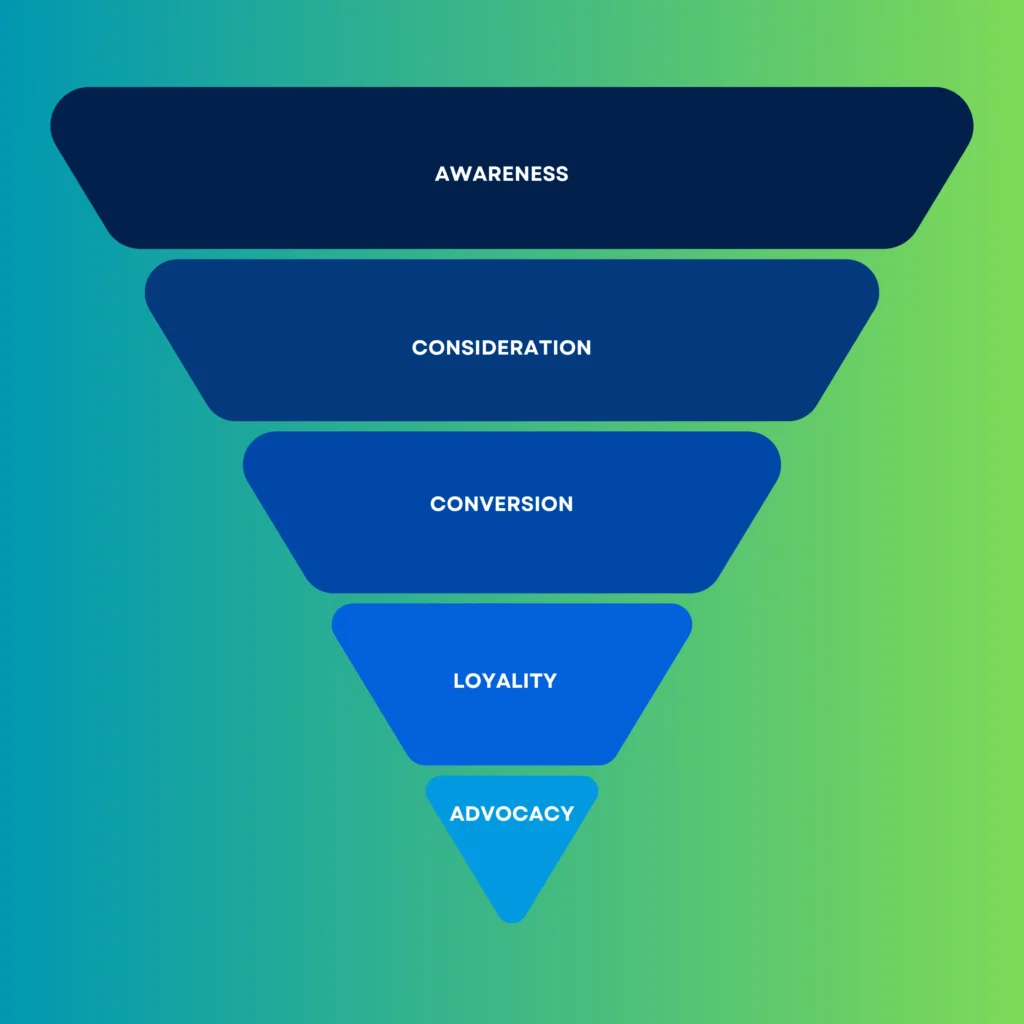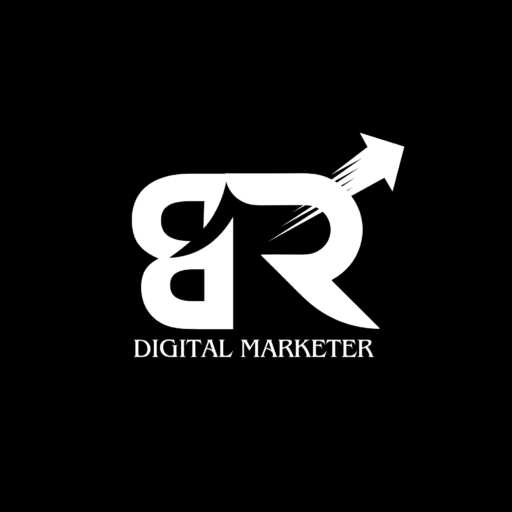In the age of constant digital connectivity, online marketing has emerged as the cornerstone for the majority of companies. Whether your business is a small venture or a big enterprise, grasping the basics of digital marketing is essential for achieving success. In this manual, we’ll explore the fundamentals in detail and assist newcomers in comprehending the essential components that propel successful digital marketing campaigns.
no:1 and Best Digital Marketing guide
What Is Digital Marketing?
Digital marketing is any promotional effort that utilizes the internet or electronic devices. It involves employing digital platforms like websites, social media, email, search engines, and applications to promote products, services, or companies. Digital marketing is focused on data, precise targeting, and allows marketers to connect with individuals worldwide, 24/7, unlike traditional marketing methods.
It encompasses a wide range of strategies, such as search engine optimization (SEO) to improve visibility on search engines, social media marketing (SMM) to engage users on platforms like Facebook and Instagram, and content marketing, which involves creating valuable content to attract and retain a target audience. Other essential elements include pay-per-click (PPC) advertising, where businesses pay for ads that generate clicks, email marketing to directly communicate with customers, and affiliate marketing, which involves partnerships to promote products for a commission.
Digital marketing also extends to mobile marketing, online public relations, and influencer collaborations. This approach enables businesses to reach a global audience, track campaign performance in real-time, and make data-driven decisions to optimize marketing efforts and drive conversions. Through digital marketing, brands can create more personalized, targeted campaigns, improving their overall marketing effectiveness.
Why is Digital Marketing Important?

Wide Audience and Worldwide Accessinbility
With more than 4.9 billion people
online around the globe, digital marketing provides an extensive platform for connecting with your intended audience. The internet breaks down geographical barriers, allowing companies to engage with customers worldwide.
Affordability
Digital marketing is significantly cheaper than conventional advertising approaches such as television or radio. Small enterprises can market on platforms like Google or Facebook with a limited budget and achieve quantifiable outcomes.
Data-Driven Decision Making
Digital marketing offers access to up-to-the-minute data, allowing marketers to assess the effectiveness of their campaigns, monitor consumer behavior, and make educated choices to refine their approaches.
Personalization and Targeting
Through sophisticated targeting capabilities, companies can tailor content, advertisements, and communications to particular groups of people, enhancing interaction and increasing the likelihood of conversions.
Core Components of Digital Marketing

a) SEO (Search Engine Optimization)
SEO is the method of improving your website and its content to appear higher in search engine results pages (SERPs). An effectively optimized website attracts natural visitors and boosts its visibility.SEO (Search Engine Optimization) is the practice of optimizing a website to improve its visibility and ranking on search engines like Google. The primary goal of SEO is to increase organic traffic by ensuring that a website appears in the top results for relevant search queries. It involves several strategies, such as conducting keyword research to identify the terms potential customers are searching for, and using those keywords strategically in the website’s content.
Key elements involve:
On-page SEO: Enhancing title tags, meta descriptions, and relevant keywords.
Off-page SEO: Gaining backlinks and increasing the authority of the domain.
Technical SEO: Improving the speed, mobile usability, and security of the site
Search Engine Optimization (SEO) is the practice of improving a website’s visibility on search engines like Google to attract more organic (unpaid) traffic. It’s all about making sure your website shows up when people search for topics, products, or services you offer. This involves optimizing your website’s content, structure, and technical aspects so that it’s easy for search engines to understand and rank.
SEO also focuses on creating a great user experience with fast loading times, mobile-friendly design, and valuable content. By helping your website rank higher on search results, SEO not only brings more visitors but also builds trust and credibility for your brand. For example, if you run a local bakery, optimizing for phrases like “best cakes near me” can help you attract more customers in your area without spending on ads.
b) SEM (Search Engine Marketing)
earch Engine Marketing (SEM) is a form of digital marketing that focuses on increasing a website’s visibility on search engine results pages (SERPs) through paid advertising. Unlike Search Engine Optimization (SEO), which focuses on organic rankings, SEM involves paying for ads that appear alongside organic search results. The most common form of SEM is pay-per-click (PPC) advertising, where businesses bid on keywords relevant to their products or services, and their ads appear when users search for those terms.
SEM allows businesses to target specific audiences based on factors like location, device, and search intent, helping them drive traffic quickly to their website. The effectiveness of SEM campaigns is measurable, with businesses able to track metrics such as click-through rates (CTR), conversions, and return on investment (ROI), allowing them to optimize their strategies for better results.
Search Engine Marketing (SEM) is a powerful way to promote your business by using paid ads to appear at the top of search engine results. Unlike SEO, which focuses on organic rankings, SEM helps you reach your audience instantly by bidding on keywords related to your products or services.
When users search for those terms, your ad shows up as a sponsored result, increasing the chances of them clicking and visiting your site. It’s a highly targeted approach—you can focus on specific locations, devices, or even user intent—and you only pay when someone clicks on your ad. For example, if you own an online store selling men’s jackets, an SEM campaign targeting “affordable men’s jackets” can drive more visitors to your site and help boost sales quickly.
c) SMM (Social Media Marketing)
Social Media Marketing (SMM) is the use of social media platforms to promote products, services, or brands and engage with a target audience. It involves creating and sharing content on platforms like Facebook, Instagram, Twitter, LinkedIn, and TikTok to build brand awareness, increase website traffic, and drive conversions. SMM includes both organic strategies, such as posting regular updates, interacting with followers, and building a community, and paid strategies, such as running targeted ads to reach specific demographics.
By leveraging the vast user base and targeting capabilities of social media, businesses can effectively connect with potential customers, foster relationships, and increase sales. SMM also enables businesses to track performance through metrics like engagement rates, clicks, and conversions, helping refine strategies and achieve better results.
Creating captivating content (posts, videos, stories)
Executing paid campaigns (boosted posts, ads)
Keeping an eye on social media trends and customer feedback.
d) Content Marketing
Content marketing is centered around producing and distributing valuable, relevant content to attract and keep a specific audience. It can be in the form of blog articles, infographics, videos, eBooks, or podcasts. It offers benefits such as establishing credibility, driving organic traffic, and developing leads.
Content marketing is all about creating and sharing valuable, relevant, and consistent content to connect with your audience and drive meaningful actions. Instead of directly pitching products or services, it focuses on solving problems, answering questions, and addressing the needs of your audience in a way that builds trust and loyalty over time. This can include blog posts, videos, social media updates, email newsletters, infographics, or even podcasts—each tailored to engage your audience where they are.
The beauty of content marketing lies in its ability to boost brand visibility, establish authority, and drive traffic without feeling like a hard sell. By consistently delivering helpful, engaging content, businesses can turn casual browsers into loyal customers and advocates, all while fostering genuine connections.
e) Email Marketing
Email marketing is still one of the most effective digital marketing approaches. By sending tailored messages to your subscribers, you can foster relationships, build trust, and convert leads into customers.
Tips:
Utilize automation to divide your audience and customize messages
Include clear calls to action (CTAs)
Test different subject lines, content, and layouts for A/B testing.
f) PPC (Pay-Per-Click Advertising)
PPC is a type of paid digital advertising where businesses pay a fee each time someone clicks on their ad. Popular platforms include Google Ads, Facebook Ads, and Instagram Ads.
Benefits:
Rapid results and traffic
Efficient budget management and targeting
Measurable performance through metrics like CPC (Cost per Click) and CTR (Click-through Rate).
Understanding the Digital Marketing Funnel

The digital marketing funnel represents the journey a customer takes from the first point of interaction to the final conversion (e.g., purchasing a product). It consists of five main stages:
- Awareness: Attract potential customers through content marketing, SEO, social media, and ads.
- Consideration: Build interest with email campaigns, targeted content, and product demonstrations.
- Conversion: Encourage action using strong CTAs, landing pages, and offers like discounts or trials.
- Loyalty: Retain customers with personalized follow-ups, loyalty programs, and quality support.
- Advocacy: Turn satisfied customers into brand advocates via referrals, reviews, and user-generated content.
Key Metrics in Digital Marketing
To measure the success of your digital marketing campaigns, tracking the right metrics is essential:
- Traffic: The number of visitors to your website.
- Conversion Rate: The percentage of visitors who take a desired action (e.g., purchasing a product, signing up for a newsletter).
- Engagement Rate: How users interact with your content (likes, shares, comments).
- Return on Investment (ROI): The profitability of your marketing efforts.
Tools Every Digital Marketer Should Know
- Google Analytics: A powerful tool to track and analyze website traffic and user behavior.
- SEMrush: An all-in-one SEO and SEM tool for keyword research, site audits, and competitor analysis.
- Hootsuite/Buffer: Social media management tools that allow you to schedule posts and track engagement.
- Mailchimp: A popular email marketing tool for creating campaigns and tracking email performance.
- Google Ads/Facebook Ads Manager: Platforms for creating and managing paid advertising campaigns.
- HubSpot:It is an all-in-one CRM platform offering tools for marketing, sales, customer service, and operations. It features email marketing, social media management, lead tracking, automation,
Conclusion: Embracing Digital Marketing for Long-Term Success
Digital marketing is a constantly evolving field that requires ongoing learning and adaptation. By mastering the basics and staying ahead of industry trends, new digital marketers can develop effective, data-driven strategies that deliver tangible results. Remember, success in digital marketing is built on a combination of creative content, targeted advertising, and precise data analysis.

